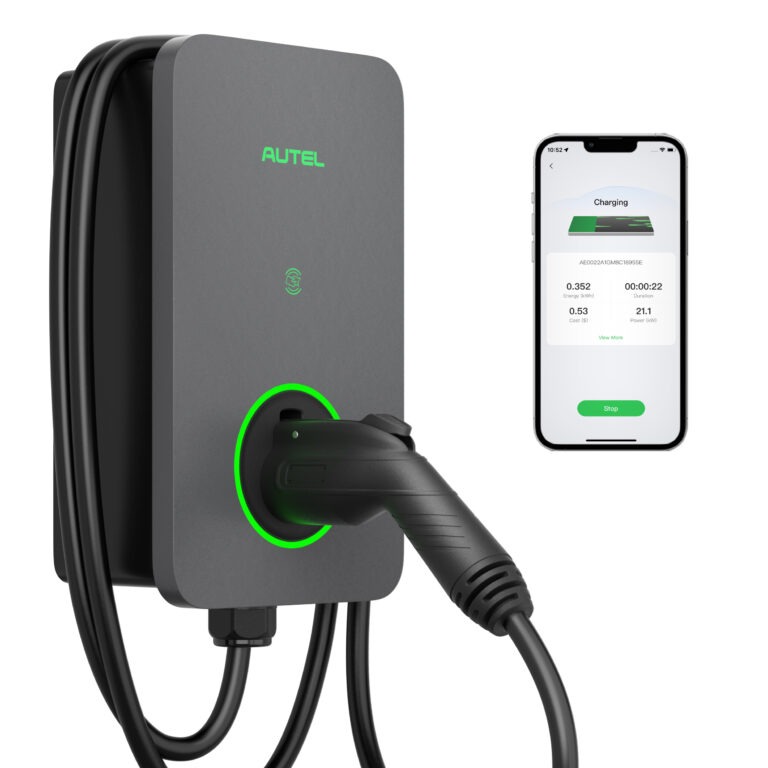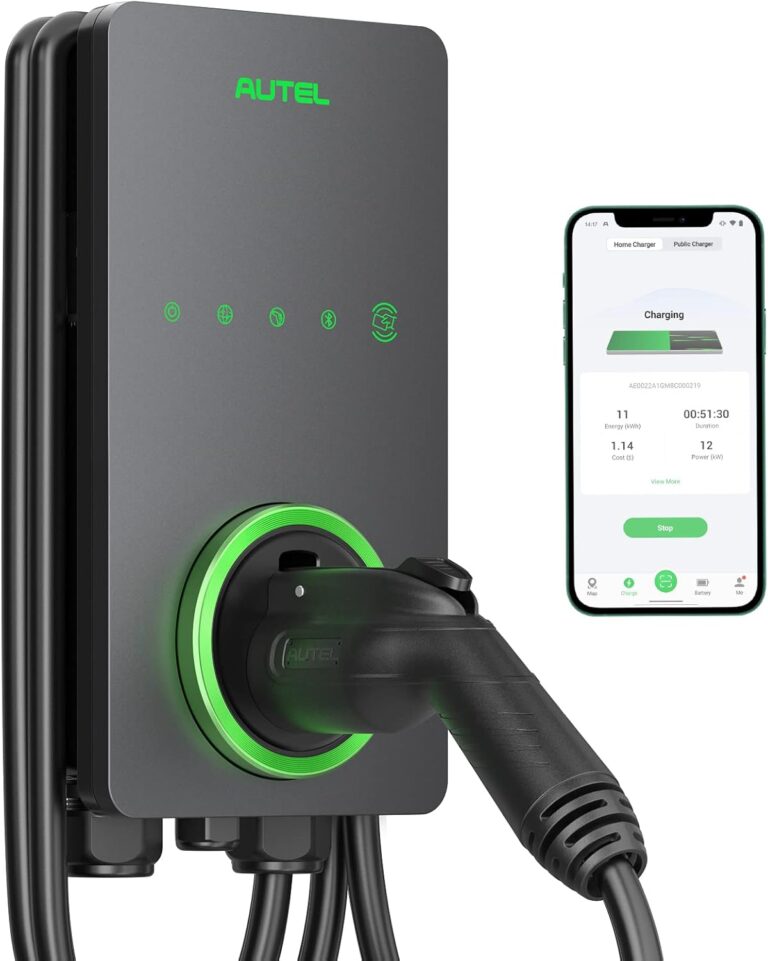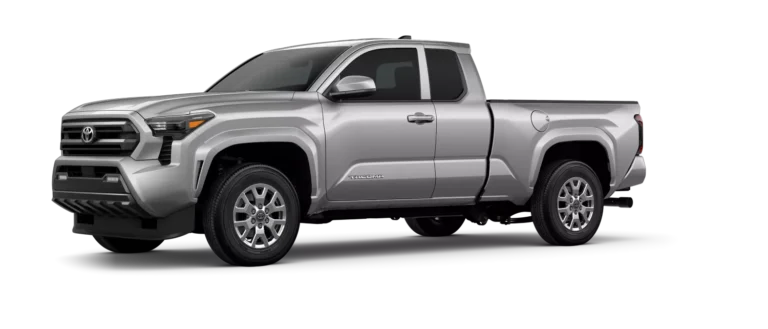
Toyota RAV4 LE vs XLE
Which Is Best?
Toyota RAV4 LE Price
From $29,250
Toyota RAV4 XLE Price
From $30,760
Don’t risk hidden issues! Click ‘Check Any VIN Now’ to see recalls, problems, Issues and more! Just enter your VIN and email to get your report.
Which Toyota RAV4? LE vs XLE
Choose the RAV4 LE if: You want a practical, value oriented SUV with essential safety features and reliable everyday driving at the most affordable price. It’s ideal for budget conscious buyers who prioritize core functionality.
Choose the RAV4 XLE if: You want a more comfortable and convenient driving experience with added features like an upgraded infotainment system, power driver’s seat, blind spot monitoring, alloy wheels, a sunroof, and SofTex seating. It’s better suited for those who want a little more comfort, technology, and style in their daily commute.
Table of Contents
Toyota RAV4 LE vs XLE - Overview
Toyota LE: The LE is the practical and value oriented entry trim, offering essential features for comfortable and reliable everyday driving. It focuses on affordability without sacrificing core necessities. Standard spec includes:
Only a basic infotainment system with touchscreen display (smaller than the XLE’s).
Standard safety features package called TSS (Toyota Safety Sense).
Steel wheels with covers.
Keyless entry.
Toyota XLE: The XLE trim steps up the comfort and convenience with added features and a touch of luxury. Think of it as offering a more refined experience without reaching the top tier premium price point of the Limited models. Upgrades over the LE include:
Upgraded infotainment system with a larger touchscreen.
Power driver’s seat.
Blind Spot Monitoring with Rear Cross Traffic Alert.
Alloy wheels as standard.
Dual zone automatic climate control.
Sunroof.
SofTex seating (instead of cloth).
Keyless entry with push button start.
Essentially, the LE is about getting the core Toyota experience at the best possible price, while the XLE adds a layer of comfort, technology, and convenience features for a more enjoyable and well equipped ride. The specific features included in each trim can vary depending on the Toyota model and model year, so just check those before commiting to a specific trim.
Best Accessories for the RAV4: Our Top Picks
Best Sunshade For The Toyota RAV4
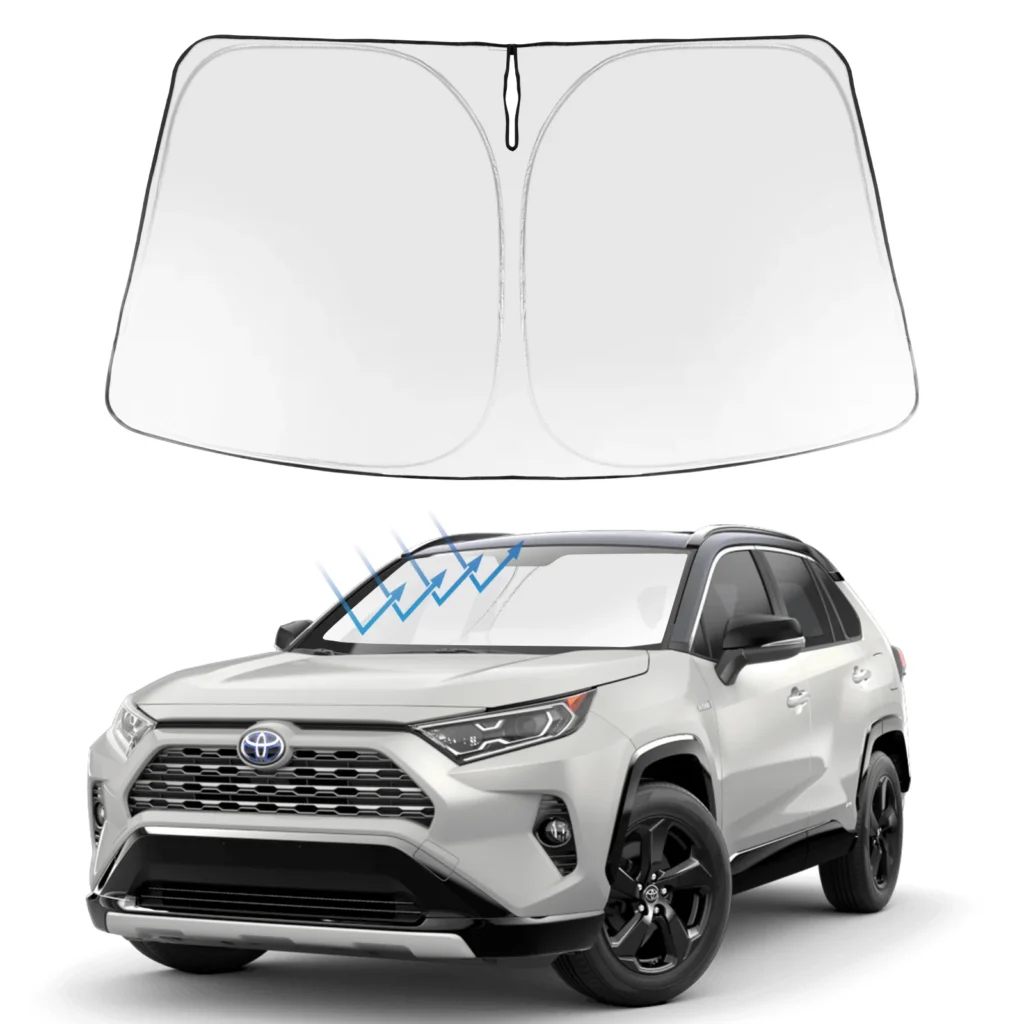
Proadsy Sun Shade
- Color: Silver
- Weight: 11.3 Ounces
- Dimensions: 12.85 x 11.81 x 0.1 Inches
- Compatibility: All Toyota RAV4
- Foldable: Yes
- Material: Fabric (alloy frame)
- Reviews: 1000+ 4.6/5 Stars
Foldable Design: Allows for compact and easy storage when not in use. Folds down relatively small to fit in a door pocket or glove compartment.
Heat Reduction: Designed to reflect sunlight and reduce the temperature inside the car, protecting the dashboard, seats, and other interior components from fading and cracking.
UV Protection: Blocks harmful UV rays from entering the vehicle, helping to prevent skin damage and fading of interior surfaces.
Easy to Use: Foldable design makes it quick and simple to deploy and store.
Good Fit: Tailored to the RAV4 windshield, providing maximum coverage and sun protection.
Effective Heat Reduction: Helps keep the car cooler, especially in hot climates.
UV Protection: Protects the interior from harmful UV rays.
Relatively Inexpensive: Typically, these types of sunshades are more affordable than custom-made or professionally installed options.
Material Quality: The longevity and effectiveness of the sunshade depend on the quality of the materials used. Cheaper materials may degrade over time or not provide sufficient insulation.
Bulkiness When Folded: While foldable, it may still take up some space when stored.
Durability: Repeated folding and unfolding can potentially weaken the material over time, leading to tears or damage.
Fit Accuracy: While designed for the RAV4, slight variations in windshield size across different model years could affect the fit. User reviews are helpful for gauging this.
Generic Appearance: May not have the most aesthetically pleasing design compared to custom or premium sunshades.
Best Bike Rack For The RAV4
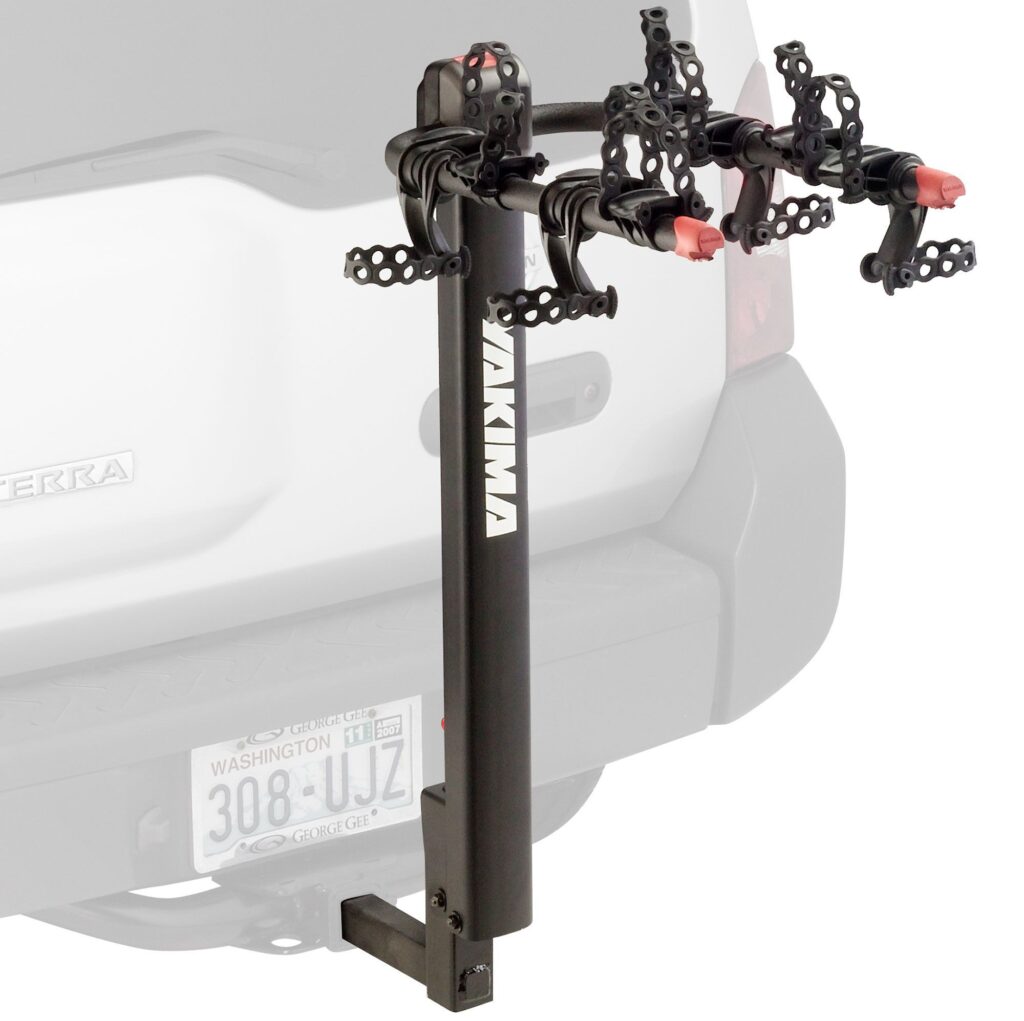
YAKIMA DoubleDown 4 Bike Hitch
- Weight Capacity: 40 lbs per bike.
- Bike Compatibility: Holds up to 4 bikes.
- Vehicle Compatibility: Ideal for SUVs with a 1.25 or 2 inch hitch.
- Mount Type: Hitch-mounted with tilting feature.
- Material: steel frame with corrosion-resistace.
The YAKIMA DoubleDown 4 Bike Hitch Mount Rack is a great accessory for Toyota RAV4 owners, especially those who enjoy group outings or family adventures. This hitch mounted rack accommodates up to four bikes, making it a versatile choice for multiple riders; think about how perfect this would be for a family with kids and their bikes heading to a trail. It’s compatible with vehicles that have a 2 inch hitch receiver, which is a common option that can be added to both the Toyota RAV4 LE and XLE.
Now, when considering between a Toyota RAV4 LE vs XLE, the practical advantages of this rack apply to both. The rack’s anti sway cradles keep the bikes steady during transport, reducing the risk of scratches – a nice benefit regardless of your trim level’s interior features! Its tilting design adds convenience, allowing access to the boot without needing to remove the rack. This ease of access is equally valuable whether you’re loading groceries into the LE or gear into the XLE’s upgraded cargo area. Durable materials and a corrosion-resistant finish enhance the longevity of this rack, a solid investment that makes either Toyota Rav4 Trim great for outdoor activities, even with frequent use.
This bike rack provides ample space for various bike sizes and styles, making it a practical option for group trips or active families. And remember, if you plan on hitting trails more often, you might find the XLE’s slightly upgraded suspension a bit more comfortable on the drive. With its straightforward functionality, it caters to a variety of transportation needs, whether heading to the local park or a weekend getaway, complementing either the functional LE or the slightly more feature-rich XLE Toyota RAV4.
- Insert the rack into a 2-inch hitch receiver and secure it with the hitch pin.
- Tighten the rack using the anti-wobble knob to ensure stability.
- Adjust the bike arms to the desired position.
- Load up to four bikes, securing them with the anti-sway cradles and straps.
- High Capacity: Holds up to four bikes, ideal for families or groups.
- Anti-Sway Design: Reduces bike movement during transit.
- Tilting Feature: Allows access to the boot without removing the rack.
- Durable: Built with corrosion-resistant materials.
- Heavier Design: Bulkier than smaller racks, making installation slightly harder.
- Hitch-Dependent: Requires a 2-inch hitch receiver.
- Price: Costs more than smaller-capacity racks.
This rack is a strong option for active families or groups needing to transport multiple bikes. Its anti-sway cradles and tilting mechanism make it convenient and secure for frequent use on longer trips.
Best Cargo Box For The RAV4
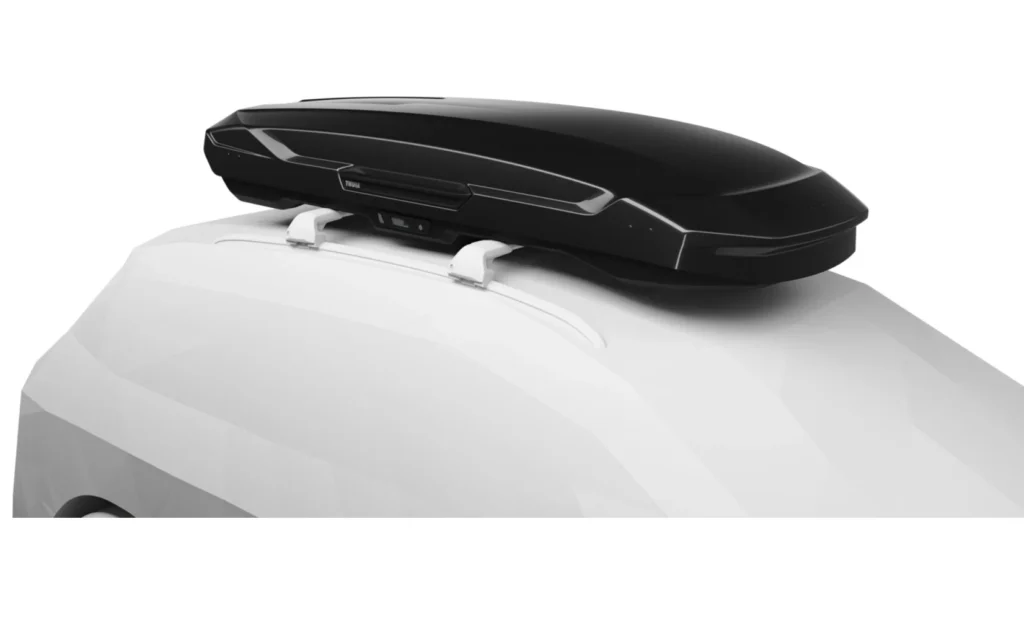
Thule Motion 3 XXL
- Storage Capacity: 22 cubic feet
- Aerodynamics: Low-profile
- Ease of Installation: Tool free
- Materials: ABS plastic
- Security Features: Slidelock system
- Vehicle Compatibility: Universal fit
- Reviews: 2500+ 4.1 Stars
The Thule Motion 3 XXL is a premium rooftop cargo box designed for families and adventure enthusiasts who need maximum storage space, perfect for maximizing cargo space on a Toyota RAV4, whether you chose the LE or the XLE. With its 22 cubic feet of capacity, it easily accommodates luggage, camping gear, or ski equipment for extended trips – making it a great addition regardless of which RAV4 trim you have. The dual side opening allows for convenient access from both sides of the vehicle, while the SlideLock system ensures secure closure and safety Whether you’re loading the kid’s sports gear in the LE or your camping equipment into the XLE, both models will benefit from the dual side loading feature.
Constructed with aerodynamic design and durable materials, it minimizes wind resistance and noise during travel, making it ideal for long road trips, something families considering the Toyota RAV4 LE vs XLE may be planning. The tool free PowerClick mounting system enables quick and hassle free installation, making it compatible with most roof racks, a feature equally as important to owners of either a RAV4 LE or XLE who will now have much more cargo space. While both RAV4 trims can use this great addition, families should carefully consider their needs before buying either the LE or XLE
- You need a high-capacity cargo box with 22 cubic feet of space for large gear, perfect for long trips or big families.
- You value convenience, as the dual-side opening makes loading and unloading gear from either side of your vehicle easy.
- You’re looking for a cargo box that’s easy to install with the PowerClick mounting system, suitable for most roof racks.
- You want a durable and aerodynamic design to minimize wind drag and reduce noise while driving at highway speeds.
Toyota RAV4 LE vs XLE Video Review
RAV4 LE vs XLE Visual Differences
Front Grille & Badging:
RAV4 XLE: Features a more refined grille with body color or silver painted accents, depending on the model year and package. It aims for a sophisticated, everyday look. The Toyota emblem retains its standard chrome finish.
RAV4 LE: Features a more basic black plastic grille with a simpler design. The Toyota emblem is standard chrome.
Bumper & Skid Plates:
RAV4 XLE: Sticks to a body colored bumper with integrated fog lights. A faux skid plate might be present, but it’s primarily for aesthetics.
RAV4 LE: Has a black plastic bumper. Skid plate are is primarily for aesthetics.
Wheels & Tires:
RAV4 XLE: Rides on alloy wheels, typically 17 or 18 inches depending on the model year and options. The designs are intended to be stylish and complement the vehicle’s overall appearance.
RAV4 LE: Typically has steel wheels with plastic covers, usually 17 inches. The tires are standard all season tires focused on fuel efficiency and ride comfort.
Suspension & Stance:
RAV4 XLE: Maintains a standard ride height and suspension setup, prioritizing on road comfort and handling. There are no specific off road tuned components.
RAV4 LE: The same as the XLE; no suspension or ride height differences.
Lighting:
RAV4 XLE: Comes with LED headlights and taillights, designed for enhanced visibility and a modern look. Fog lights are typically standard.
RAV4 LE: Comes with LED headlights and taillights. Fog lights are NOT included
Interior Differences:
Seating & Materials:
RAV4 XLE: Offers SofTex trimmed seats (a synthetic leather) or upgraded cloth, depending on the model year and package. Heated front seats are often an option.
RAV4 LE: Features cloth upholstery in a more basic design. Heated front seats are usually not available, even as an option.
Dashboard & Technology:
RAV4 XLE: Both trims usually share the same infotainment screen size, but the XLE may have additional features like integrated navigation (depending on the package). The instrument cluster might have a slightly upgraded display.
RAV4 LE: Will often have the same infotainment touch screen display

Toyota RAV4 Model Updates + Timeline
Toyota RAV4 vs Rivals
| Specification | Toyota RAV4 LE | Toyota RAV4 XLE | Honda CR-V | Mazda CX-5 | Hyundai Tucson | Nissan Rogue |
|---|---|---|---|---|---|---|
| Engine | 2.5L 4-Cyl | 2.5L 4-Cyl | 1.5L Turbo 4-Cyl | 2.5L 4-Cyl | 2.5L 4-Cyl | 1.5L Turbo 3-Cyl |
| Horsepower | 203 hp | 203 hp | 190 hp | 187 hp | 187 hp | 201 hp |
| Fuel Economy (MPG, Combined) | 30 MPG | 30 MPG | 30 MPG | 26 MPG | 29 MPG | 33 MPG |
| Drivetrain | FWD / AWD | FWD / AWD | FWD / AWD | FWD / AWD | FWD / AWD | FWD / AWD |
| Infotainment System | 8" Touchscreen, Apple CarPlay | 8" Touchscreen, Apple CarPlay | 7" Touchscreen, Apple CarPlay | 10.25" Touchscreen | 8" Touchscreen | 8" Touchscreen |
| Safety Features | Toyota Safety Sense 2.5 | Toyota Safety Sense 2.5 | Honda Sensing | i-Activsense | Hyundai SmartSense | Nissan ProPILOT Assist |
| Base Price | Approx. $28,000 | Approx. $30,000 | Approx. $29,500 | Approx. $29,300 | Approx. $28,500 | Approx. $29,000 |
Check Your Spec | RAV4 LE vs XLE
Let’s compare the RAV4 LE and XLE, focusing on their key features and how they impact value.
We’ll examine the differences between the LE’s emphasis on essential features and affordability versus the XLE’s focus on enhanced comfort, convenience, and tech amenities.
Understanding the value proposition of each approach – practicality vs upgraded features – will help you determine which best aligns with your needs and priorities, both for everyday use and potential resale value.
All valuations below are based on a 36-month/60,000 mile ownership profile.
Toyota RAV4 LE | Is It Worth It?
Cloth Interior & Manual Seats
The LE’s cloth interior and manual seat adjustments prioritize practicality over luxury. Value Impact: This keeps the upfront cost lower, making the RAV4 accessible to a wider range of buyers. While cloth might not be as stain resistant or aesthetically pleasing as SofTex, it’s durable and easy to clean, aligning with the LE’s focus on low maintenance.
Standard Infotainment System
The LE’s standard infotainment system provides essential connectivity features like Apple CarPlay and Android Auto. Value Impact: This ensures drivers can stay connected without needing to pay extra for upgraded systems. However, the screen size is a bit on the small size, and advanced features like navigation might be absent.
Steel Wheels with Covers
The LE’s steel wheels with plastic covers are a pure cost saving measure. Value Impact: While not as visually appealing as alloy wheels, steel wheels are durable and less prone to damage. They also tend to be less expensive to replace, further reducing the overall cost of ownership.
Keyed Entry
The LE uses a standard key for entry and ignition. Value Impact: While lacking the convenience of keyless entry, this system is reliable and doesn’t rely on electronic components that could potentially fail.
Standard Lighting
The LE comes equipped with standard LED headlights and taillights, providing adequate visibility. Value Impact: This meets essential safety requirements without adding the expense of premium lighting systems like projector headlights or fog lights.
Lack of Blind Spot Monitoring (or Optional)
Blind Spot Monitoring (BSM) is often either an optional add on or completely absent from the LE trim. Value Impact: This can be seen as a trade off, as some buyers might prioritize safety features like BSM, while others are willing to forgo them to save money. However, it’s important to consider the potential safety benefits of BSM when evaluating the LE’s value.
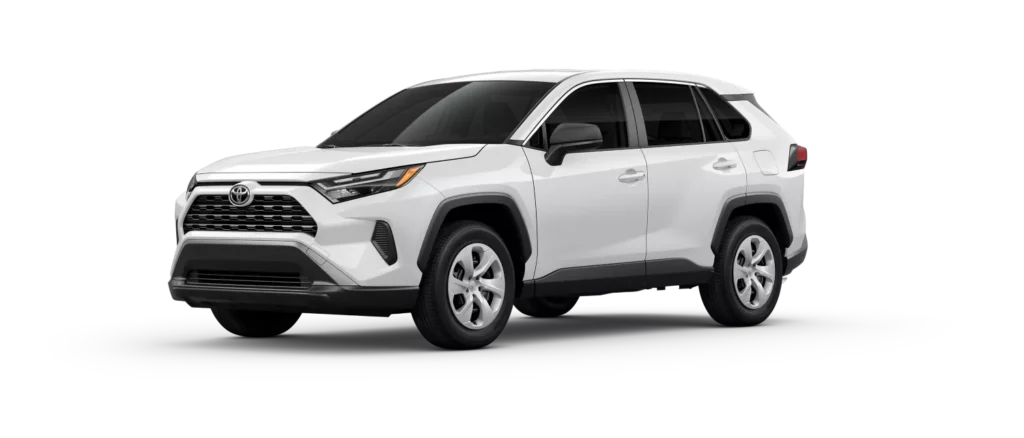
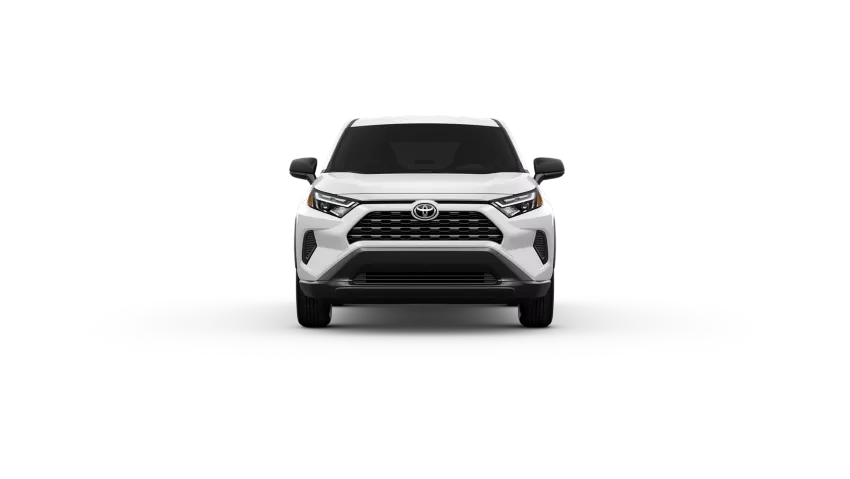
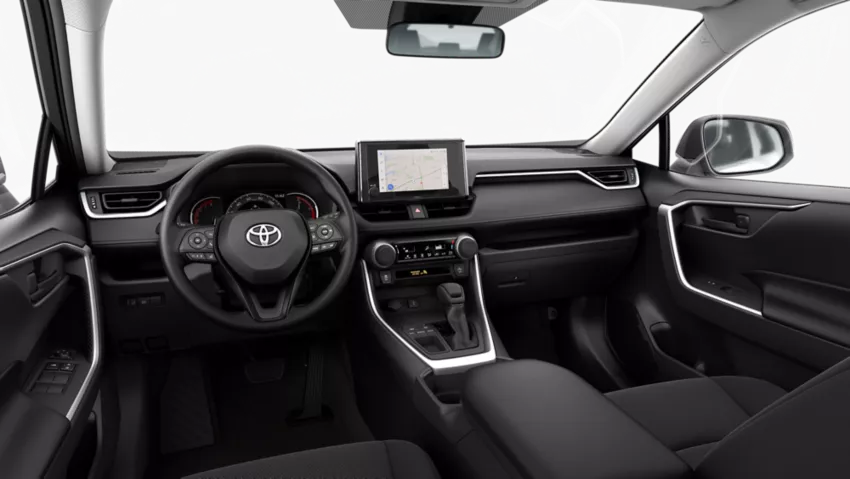
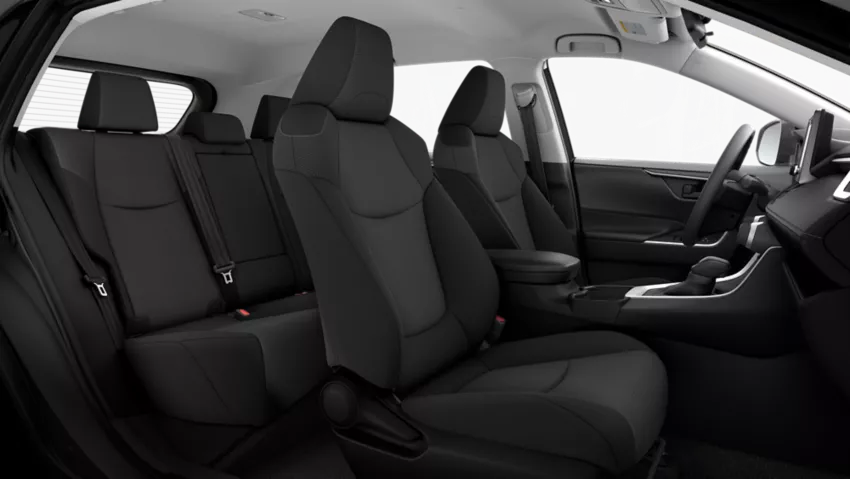
Value Assessment: Is The LE Worth the Upgrade?
The RAV4 LE prioritizes affordability and practicality, offering essential features at a lower price point.
While it lacks the comfort and convenience of higher trims, it provides a solid foundation for reliable transportation. The absence of certain features like alloy wheels, keyless entry, and BSM can be seen as trade offs, but they contribute to the LE’s overall value proposition as an accessible and budget friendly compact SUV.
The LE is a good choice for budget conscious buyers who prioritize functionality and dependability over luxury features and advanced technology.
Toyota RAV4 XLE | Is It Worth It?
SofTex Trimmed Interior & Heated Front Seats
The XLE’s SofTex trimmed seats and heated front seats offer a noticeable upgrade in comfort and aesthetics compared to the LE’s cloth interior. Value Impact: SofTex provides a more luxurious feel, is easier to clean than cloth, and adds a touch of refinement to the cabin. Heated seats enhance comfort during colder months, increasing the vehicle’s appeal in various climates. This contributes to both enhanced comfort and higher resale value.
Upgraded Infotainment System
The XLE includes a larger touchscreen display and additional features like integrated navigation in its infotainment system. Value Impact: A larger screen provides a more user friendly interface, making it easier to access apps, maps, and other functions. Integrated navigation eliminates the need to rely solely on smartphone based navigation, improving convenience on long trips. The specific impact depends on the screen size difference.
Alloy Wheels
The XLE comes standard with alloy wheels, enhancing its overall appearance compared to the LE’s steel wheels. Value Impact: Alloy wheels are more visually appealing and can slightly improve handling due to their lighter weight. They also add to the vehicle’s perceived value, improving its attractiveness to potential buyers.
Keyless Entry with Push Button Start
The XLE’s keyless entry system allows for convenient unlocking and starting of the vehicle without a physical key. Value Impact: This feature simplifies everyday use, making it easier to enter and exit the vehicle. Push button start further streamlines the process, enhancing the overall driving experience.
Roof Rails
The XLE typically includes roof rails, allowing for the easy installation of roof racks and cargo carriers. Value Impact: This expands the vehicle’s cargo carrying capacity, making it suitable for outdoor adventures and family trips. Roof rails add to the RAV4’s overall versatility and practicality.
Standard Blind Spot Monitoring with Rear Cross Traffic Alert
The XLE typically comes standard with Blind Spot Monitoring (BSM) and Rear Cross Traffic Alert (RCTA), safety features that the LE might only offer as an option (or not at all). Value Impact: These features significantly enhance safety by alerting the driver to vehicles in their blind spots and when backing out of parking spaces. This increases driver confidence and helps prevent accidents, and in some cases actually lowers your insurance premium.
Power Driver’s Seat
The XLE features a power adjustable driver’s seat, allowing for a more customized and comfortable driving position. Value Impact: A power driver’s seat is more convenient and easier to adjust than a manual seat, improving comfort on long drives.
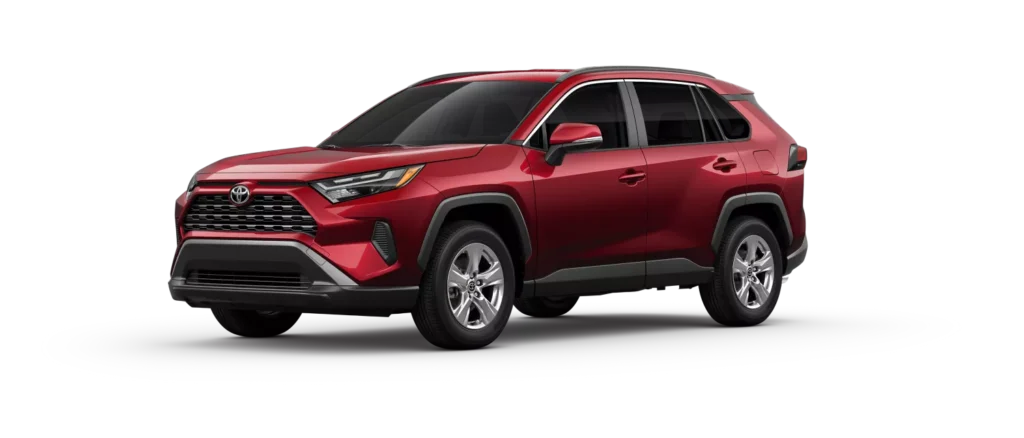
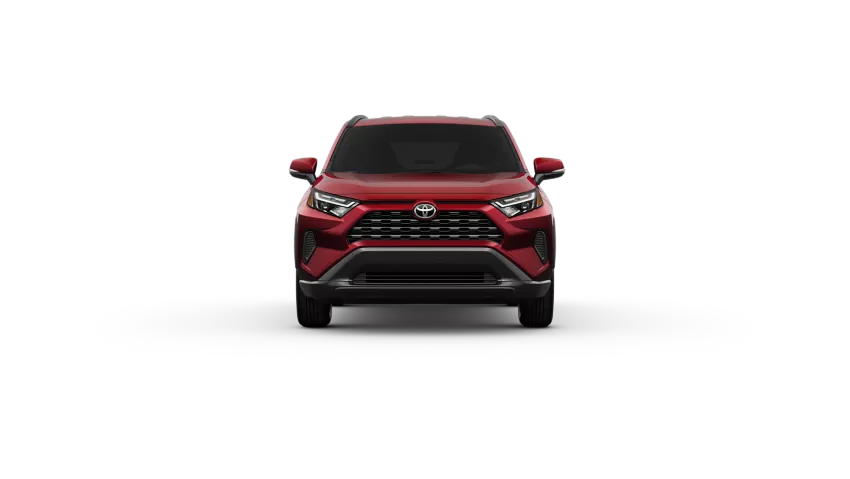
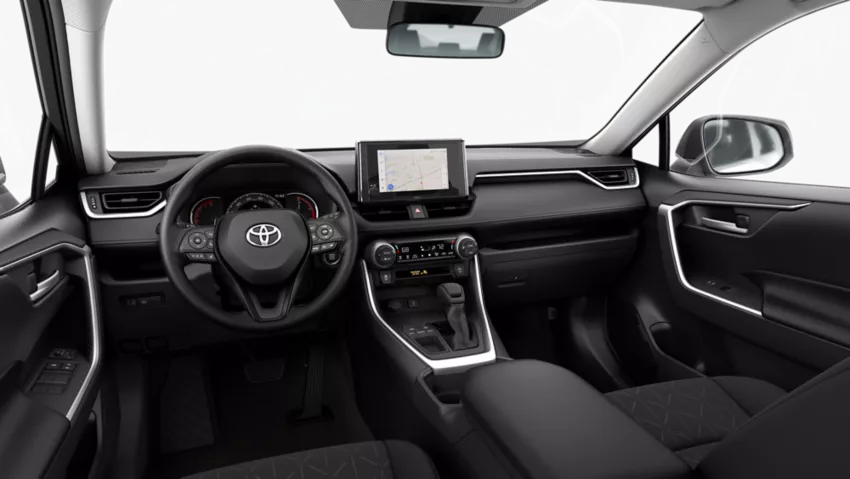
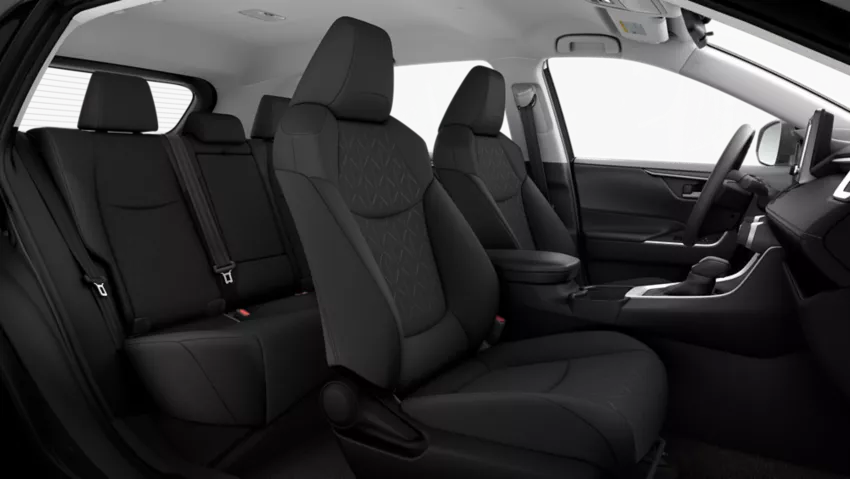
Value Assessment: Is The XLE Worth the Upgrade?
The RAV4 XLE offers a compelling blend of comfort, convenience, and essential safety features at a reasonable price point.
It builds upon the LE’s foundation with upgrades that enhance the overall driving and ownership experience, making it a worthwhile investment for buyers who value these enhancements.
From the nicer interior to convenience features, the RAV4 XLE is a great balance of value and price.
Toyota RAV4 LE vs XLE Cost Of Ownership
Initial Purchase Price
MSRP: The base price for the Toyota RAV4 LE starts around $29,250.
Higher trims: Models like the Hybrid Limited models can exceed $40,605 depending on options, spec, features and configurations.
Toyota RAV4 LE Maintenance Costs
Routine Maintenance:
Oil Changes: The frequency of oil changes for your RAV4 LE depends on driving conditions and the type of oil used. Typically, expect oil changes every 5,000 to 10,000 miles.
Cost: $50-$125 per oil change 125 per oil change (depending on synthetic vs. conventional oil and locations).
Tire Rotations: Rotating your tires every 6,000 to 8,000 miles helps ensure even wear and extends their lifespan.
Cost: $25-50 per rotation.
Air Filter Replacement: Replacing the engine air filter and cabin air filter is crucial for optimal engine performance and air quality inside the vehicle.
Cost: $20-$40 for each filter, plus labor if you don’t DIY.
Fluid Checks and Top Ups: Regularly checking and topping up essential fluids like coolant, brake fluid, and windshield washer fluid is vital for your RAV4 LE’s health.
Cost: Varies, but usually minimal if done during other services.
2. Scheduled Maintenance: Following Toyota’s Recommendations
Toyota provides a recommended maintenance schedule for the RAV4 LE, typically outlined in the owner’s manual. These services include:
30,000 Mile Service: This often includes a more thorough inspection, fluid replacements, and potential replacement of components like brake pads.
Cost: $200-$400.
60,000 Mile Service: Similar to the 30,000 mile service, but might also include spark plug replacement and other preventative maintenance.
Cost: $300-$500.
90,000 Mile Service: Another comprehensive service that may involve fluid flushes and more in depth inspections.
Cost: $400-$600.
3. Potential Repairs:
While the Toyota RAV4 LE is known for its reliability, repairs can still occur. Some common areas to consider:
Brakes: Brake pad replacement and rotor resurfacing or replacement are necessary as the brakes wear down.
Cost: $150-$400 per axle.
Battery: The RAV4 LE’s battery will eventually need replacement.
Cost: $100-$300.
Tires: Replacing tires is an inevitable expense. Consider the type of tires you need based on your driving conditions (all-season, winter, etc.).
Cost: $100-$300 per tire (depending on size and brand).
Toyota RAV4 XLE Maintenance Costs
Routine Maintenance: Keeping Your RAV4 LE in Top Shape
Oil Changes: The frequency of oil changes for your RAV4 LE depends on driving conditions and the type of oil used. Typically, expect oil changes every 5,000 to 10,000 miles.
Cost: $50-$125 per oil change 125 per oil change (depending on synthetic vs. conventional oil and location). The cost is the same as the LE because the engine is typically the same.
Tire Rotations: Rotate your tires every 6,000 to 8,000 miles to promote even wear and extend their lifespan.
Cost: $25-50 per rotation. The cost is the same as the LE because tire rotations are a standard procedure.
Air Filter Replacement: Maintain optimal engine performance and cabin air quality by replacing the engine air filter and cabin air filter regularly.
Cost: $20-$40 for each filter, plus labor if you don’t DIY. The cost is the same as the LE because the filters are the same.
Fluid Checks and Top Ups: Regularly inspect and top up essential fluids like coolant, brake fluid, and windshield washer fluid.
Cost: Varies, but usually minimal if done during other services. Cost is the same as the LE.
2. Scheduled Maintenance: Following Toyota’s Recommendations
Follow Toyota’s recommended maintenance schedule for the RAV4 XLE, typically outlined in the owner’s manual. These services typically involve more extensive inspections and maintenance:
30,000 Mile Service: Includes a thorough inspection, fluid replacements, and possible replacement of components like brake pads.
Cost: $200-$400. Cost is comparable to the LE.
60,000 Mile Service: Similar to the 30,000 mile service, potentially including spark plug replacement and preventative maintenance.
Cost: $300-$500. Cost is comparable to the LE.
90,000 Mile Service: A comprehensive service that may involve fluid flushes and more in depth inspections.
Cost: $400-$600. Cost is comparable to the LE.
3. Potential Repairs:
While the RAV4 XLE benefits from Toyota’s reputation for reliability, repairs can still arise. Common areas to consider:
Brakes: Expect brake pad replacement and rotor resurfacing or replacement as the brakes wear down.
Cost: $150-$400 per axle. Cost is comparable to the LE.
Battery: The RAV4 XLE’s battery will eventually require replacement.
Cost: $100-$300. Cost is comparable to the LE.
Tires: Replacing tires is a recurring expense. The specific tires (and therefore cost) might vary slightly from the LE depending on the factory-installed tire size and type, but the difference will be minimal.
Cost: $100-$300 per tire (depending on size, brand, and whether you need tires to fit the XLE alloy wheels).
Toyota RAV4 LE vs XLE Insurance Costs
Generally speaking, insurance costs for the Toyota RAV4 XLE are likely to be slightly higher than for the LE trim. Here’s why:
Higher MSRP: The XLE has a higher Manufacturer’s Suggested Retail Price (MSRP) than the LE. Insurance companies consider the vehicle’s value when determining premiums, as a more expensive vehicle costs more to repair or replace.
More Features = Higher Repair Costs: The XLE typically has more features than the LE, such as alloy wheels, upgraded interior materials, and additional electronic components. These features can increase repair costs in the event of an accident.
Theft Risk: While not a major factor, the XLE’s desirable features (e.g., alloy wheels, premium sound system) might make it slightly more attractive to thieves, potentially increasing comprehensive insurance costs.
RAV4 LE: Expect to pay slightly less for insurance compared to the XLE.
RAV4 XLE: Due to the higher MSRP and additional features, expect to pay a slightly higher premium than the LE. The difference might be $50-$150 per year but this is just a very rough estimate.
Toyota RAV4 LE and XLE Depreciation
Toyota RAV4 LE:
Moderate Depreciation: The LE, as a base trim, depreciates at a rate typical for the compact SUV segment. It’s a mainstream vehicle, so depreciation follows predictable patterns.
Factors:
Market Demand: The RAV4 is consistently a popular and well regarded SUV, which helps maintain resale value across all trims.
Wide Availability: As the base trim, there are a large number of used LE models on the market, potentially increasing competition and slightly lowering resale prices compared to higher trims.
Features: The LE’s more basic feature set might make it less appealing to some buyers on the used market compared to higher trims with more luxurious amenities.
Condition: Like any vehicle, the LE’s condition and mileage will be the most significant factors impacting its depreciation. A well maintained LE will always command a higher resale price.
Toyota RAV4 XLE:
Potentially Slower Depreciation (Slightly): The XLE, with its added features and a slightly more premium image, may depreciate a bit slower than the LE. The difference is unlikely to be dramatic, but it can be a factor.
Factors:
Increased Desirability: The XLE’s added features (alloy wheels, SofTex, blind spot monitoring, etc.) make it more desirable to a broader range of used car buyers.
Premium Perception: The XLE projects a slightly more upscale image, which can translate to a higher perceived value on the used market.
Feature Set Appeal: The added convenience and safety features of the XLE are attractive to families and individuals looking for a well equipped used SUV. This could make an XLE slightly easier to sell.
Price new: Since this vehicle costs more when new, it can often be sold for more later on.
Toyota RAV4 LE and XLE Warranty
Toyota RAV4 LE and XLE Warranty Coverage
Basic Warranty (Bumper to Bumper): Toyota typically offers a 3 year/36,000 mile limited warranty that covers defects in materials or workmanship in most components of the vehicle.
Powertrain Warranty: A 5-year/60,000-mile warranty usually covers the engine, transmission, and related drivetrain components.
Hybrid Component Warranty (If Applicable): For RAV4 Hybrid models (LE and XLE), Toyota typically offers an 8-year/100,000 mile warranty covering the hybrid battery and related hybrid system components. Some states, like California, may have longer hybrid component warranty requirements.
What This Means:
LE and XLE: Identical Coverage: Both the RAV4 LE and XLE trims come with the exact same standard Toyota factory warranty. There’s no difference in coverage based on the trim level.
What’s Covered: The warranty covers repairs or replacements due to manufacturing defects.
What’s Not Covered: Normal wear and tear items (brake pads, tires, wiper blades, etc.), damage from accidents, misuse, neglect, or modifications are typically not covered by the warranty.
Maintenance: Routine maintenance services (oil changes, tire rotations, filter replacements) are the owner’s responsibility and are not covered by the warranty.
Extended Warranty Options:
Toyota Extra Care: Toyota offers extended warranty plans called “Toyota Extra Care” that can provide coverage beyond the original factory warranty. These plans are available for both the LE and XLE.
Benefits: Extended warranties can cover repairs for a longer period or with more comprehensive coverage, offering peace of mind and potentially saving money on unexpected repairs after the factory warranty expires.
Cost: The cost of an extended warranty varies significantly depending on the coverage level (Platinum, Gold, etc.), the length of the coverage (number of years and mileage), and the deductible amount. Get quotes from multiple dealers to compare prices.
Third-Party Warranties: You can also purchase extended warranties from third-party providers. Compare the coverage and reputation of these providers carefully before making a decision.
Final Thoughts
The Toyota RAV4 LE stands out as an excellent option for budget conscious buyers seeking a reliable and fuel efficient compact SUV. Its strength lies in its affordability, providing a solid foundation of essential features and Toyota’s renowned dependability without unnecessary frills.
Core Strengths: Lower purchase price, strong fuel economy, and Toyota’s reputation for reliability. It covers the basics exceptionally well.
Trade offs: The LE requires some sacrifices in comfort, convenience, and technology compared to higher trims. Features like alloy wheels, SofTex seating, keyless entry, and blind spot monitoring are either absent or optional.
Best Suited For: Buyers who prioritize saving money upfront and are willing to forgo some extras for a lower price. Practical individuals who value functionality and dependability over luxury features.
Long Term Considerations: Maintenance costs are predictable and relatively low. Resale value is solid, although it may depreciate slightly faster than higher trims. Insurance costs will typically be lower than the XLE.
Final Verdict: The RAV4 LE offers outstanding value for those prioritizing practicality and affordability. It’s a smart choice for budget conscious individuals who want a reliable and fuel efficient SUV without breaking the bank.
Toyota RAV4 XLE: A Worthwhile Upgrade for Enhanced Comfort and Convenience
The Toyota RAV4 XLE strikes a compelling balance between affordability and enhanced features, offering a more comfortable and convenient driving experience compared to the base LE trim. It provides a notable step up in amenities without reaching the premium price points of the top tier trims.
Core Strengths: A range of desirable upgrades, including SofTex seating, alloy wheels, keyless entry, and standard blind spot monitoring. These features enhance both comfort and safety, although it could be argued you’re paying for extra safety with the BSM, which is not something we endorse.
Added Value: SofTex seats, alloy wheels, heated seats, blind spot monitoring.
Compromises: The XLE commands a higher initial price than the LE, and insurance costs are likely to be slightly higher.
Best Suited For: Buyers who appreciate added convenience, safety, and a touch of luxury without exceeding a specific budget. Those who plan to keep the vehicle for several years, maximizing their enjoyment of the upgraded features.
Long Term Considerations: Resale value is likely to be slightly better than the LE due to its more desirable feature set. Maintenance costs are generally comparable to the LE, with a slight potential increase due to more complex electronic features.
Final Verdict: The RAV4 XLE is a well rounded choice that provides a meaningful upgrade in comfort, convenience, and safety features for a relatively modest increase in price. The additional features provide a significantly better overall ownership experience, and a nice balance of cost to functionality.
Overall Recommendation:
The “better” choice between the RAV4 LE and XLE ultimately depends on individual priorities and budget.
If budget is the primary concern, the LE is a solid and practical choice.
If you’re willing to spend a bit more for added comfort, convenience, and safety, the XLE is a strong contender.
Before making a final decision, it’s crucial to test drive both trims and carefully consider your specific needs and preferences. Obtain insurance quotes for both models and compare the total cost of ownership (including purchase price, insurance, maintenance, and potential depreciation) to make an informed decision that aligns with your budget and lifestyle. Also, review packages offered, or options that are available in the area that you live. Look at the year, and options for those specific vehicles, as features can change, especially when models are refreshed or updated.
Toyota RAV4 LE vs XLE | FAQ
What is the difference between the Toyota RAV4 LE and XLE?
The primary difference between the Toyota RAV4 LE and XLE lies in their features and amenities. The LE is the base trim, focusing on essential features and affordability. The XLE builds upon the LE by adding a range of comfort, convenience, and safety upgrades. Key differences typically include:
Exterior: Alloy wheels (XLE), body colored mirrors and door handles (XLE), available roof rails (XLE, may be optional on LE), fog lights (XLE).
Interior: SofTex or upgraded cloth seating (XLE), power driver’s seat (XLE), available heated front seats (XLE), automatic climate control (XLE, often dual zone), keyless entry with push button start (XLE).
Safety: Blind Spot Monitoring with Rear Cross Traffic Alert (Standard on XLE, optional or not available on LE).
Infotainment: XLE may offer a larger touchscreen display or additional infotainment features, depending on the specific model year.
Why is the XLE better than the LE?
Whether the XLE is “better” than the LE is subjective and depends on individual needs and priorities. The XLE offers a more comfortable and convenient driving experience due to its added features. The XLE is better IF the features and upgrades it offers are things you personally value and are willing to pay for.
The XLE offers improvements over the LE. If these features are important to you, you could get an upgraded infotainment system, and enjoy better safety features.
What does XLE mean on a RAV4?
“XLE” is a Toyota trim level designation. It typically stands for “eXtra Luxury Edition” or something similar, although Toyota doesn’t officially publish a specific definition. It signifies a mid range trim level that offers enhanced features and amenities compared to the base (LE) trim but is typically less luxurious than higher trims like the Limited or Platinum. “XLE” indicates a balance between value and upgraded features, providing a more comfortable and convenient driving experience without reaching the top tier price point.
Unlock accurate valuations for your car’s features in seconds – find out what your options are worth today and in the future.
